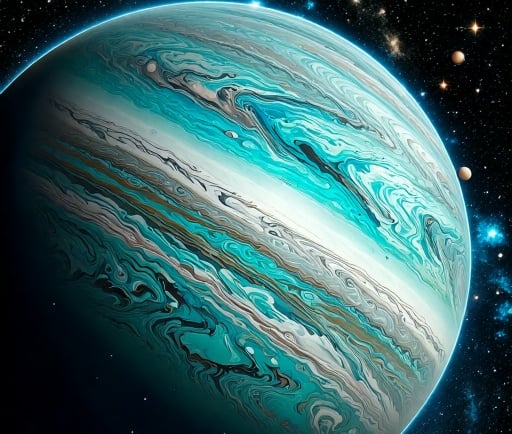38 Vir b: A New Frontier Orbiting a Blue Star


Introduction to 38 Vir b
The ever-expanding realm of astronomy brings to light the fascinating celestial bodies beyond our solar system. One intriguing discovery is the exoplanet known as 38 Vir b, located approximately 33.30 parsecs from Earth within the Virgo constellation. This blog post delves into the various characteristics of this exoplanet, including its mass, orbital period, and eccentricity, all of which contribute to our understanding of planetary formation and evolution.
Key Characteristics of 38 Vir b
38 Vir b is an exoplanet with a significant mass of 4.5 Jupiter masses. Such a mass places it among the heavier exoplanets, suggesting that its formation likely involved the accretion of a substantial amount of gas. The planet exhibits an orbital period of 826 days, which is approximately 2.27 Earth years. This lengthy period indicates that 38 Vir b orbits its parent star at a considerable distance, contributing to the unique environmental conditions that could support a diverse range of atmospheric phenomena.
The Radial Velocity Method: Unveiling New Worlds
The detection of 38 Vir b was achieved through the radial velocity method, a technique employed to measure the wobble in a star's position caused by the gravitational tug of an orbiting planet. This method allows astronomers to estimate a planet's mass and orbit, paving the way for deeper insights into its characteristics. 38 Vir b has an eccentricity of 0.03 + 0.04, indicating that its orbit is nearly circular. This relatively low eccentricity suggests stable orbital dynamics, which is advantageous for maintaining stable climates and potential habitability in the vicinity of its parent star.
A New Frontier
The discovery of 38 Vir b exemplifies the incredible advancements in exoplanet research through techniques such as the radial velocity method. As we continue to explore the cosmos, understanding the features and behaviors of exoplanets like 38 Vir b not only enhances our knowledge of planetary systems but also raises questions about the potential for life beyond our own world. The study of such celestial bodies remains a promising frontier in modern astronomy, inviting scientists and enthusiasts alike to unravel the mysteries of the universe.
